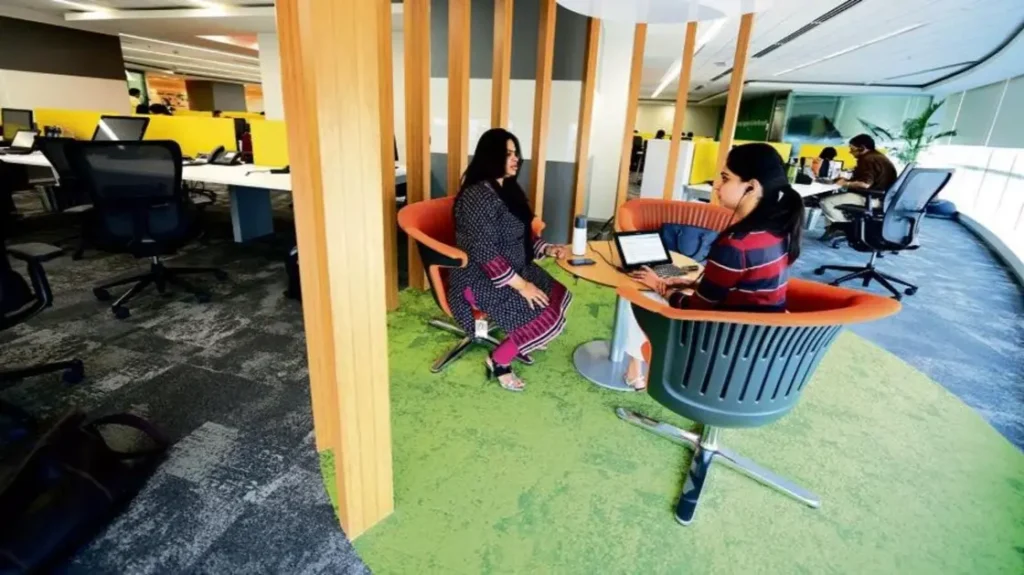I. A. Brief Overview of India’s IT Industry
Untold Story of India’s IT sector, a key player in the global market, has been instrumental in the country’s economic growth. However, the landscape is changing rapidly, posing new challenges to the industry.
B. Current Challenges Faced by the IT Sector in India
The IT sector in India is grappling with various issues, from technological shifts to geopolitical tensions, affecting its once-unrivaled position in the global market.
II. Historical Context
A. Growth and Development of India’s IT Industry
Historically, India’s IT Industry has witnessed exponential growth, driven by factors such as a vast talent pool, cost-effective solutions, and English proficiency. Companies like Infosys, TCS, and Wipro have played pivotal roles in this journey.
B. Key Contributors to the Industry’s Success
The success of India’s IT industry can be attributed to its ability to adapt to changing global demands, foster innovation, and provide high-quality services. However, sustaining this success is becoming increasingly challenging.
III. Global Shifts in Technology
A. Impact of Emerging Technologies on Traditional IT Services
The rise of automation and artificial intelligence (AI) has reshaped the traditional IT services landscape. As businesses globally adopt these technologies, the demand for routine tasks traditionally outsourced to India diminishes.
B. Changing Dynamics in Software Development and Maintenance
The dynamics in software development and maintenance are evolving as agile methodologies gain prominence. Companies are favoring shorter development cycles, necessitating a shift in the approach and skill set of Indian IT professionals.
IV. Skill Set Challenges
A. Evolving Skill Requirements in the IT Field
The IT field is experiencing a seismic shift in skill requirements. Demand for specialized skills in areas such as AI, machine learning, and cybersecurity is increasing, posing a challenge for the traditionally diverse skill set of Indian IT professionals.
B. The Need for Continuous Upskilling
To stay relevant, IT professionals in India must embrace continuous upskilling, adapting to the evolving technology landscape. Companies investing in employee training and development will likely fare better in this competitive environment.
V. Competition from Emerging Markets
A. Emerging Countries Challenging India’s Dominance
While India has long been the go-to outsourcing destination, emerging countries such as the Philippines, Vietnam, and Mexico are gaining traction. Understanding and addressing the strengths of these competitors is crucial for the future of India’s IT industry.
B. Strategies to Stay Competitive
Staying competitive involves a strategic reevaluation of service offerings, cost structures, and client relationships. Indian IT companies must differentiate themselves through innovation and customer-centric solutions.
VI. Geopolitical Factors
A. Impact of Geopolitical Tensions on the IT Industry Untold Story
Geopolitical tensions, such as trade restrictions and sanctions, are impacting the IT industry. India’s IT companies must navigate these challenges carefully, ensuring business continuity and maintaining global partnerships.
B. Global Political Instability Affecting Outsourcing Relationships
The volatile global political landscape is influencing outsourcing relationships. Companies relying on outsourcing partners must diversify their portfolios and establish contingency plans to mitigate potential disruptions.
VII. Economic Challenges
A. Currency Fluctuations and Their Impact
Currency fluctuations can significantly impact the cost-effectiveness of outsourcing. Companies must devise strategies to manage currency risks and maintain financial stability in the face of economic uncertainties.
B. Economic Downturns Affecting IT Spending Globally
During economic downturns, global IT spending tends to decrease. Indian IT companies should anticipate and prepare for such downturns, focusing on efficiency, cost management, and value-driven solutions.
VIII. Environmental Sustainability
A. Increasing Focus on Eco-Friendly Practices in the IT Sector
As the world becomes more environmentally conscious, the role of green technology in the IT sector is gaining prominence. Indian IT companies should prioritize sustainability to align with global expectations.
B. Corporate Responsibility in Sustainability
Companies can enhance their reputation by demonstrating corporate responsibility in sustainability, implementing eco-friendly practices, and contributing to environmental conservation efforts.
IX. Remote Work Dynamics
A. Shifting Work Models Post-Pandemic
The COVID-19 pandemic has accelerated the adoption of remote work. The rise of remote work in the IT industry introduces both challenges and opportunities, requiring companies to redefine work structures and employee engagement strategies.
B. Challenges and Opportunities in the Remote Work Landscape
While remote work offers flexibility, it also brings challenges such as collaboration barriers and cybersecurity concerns. Companies must proactively address these challenges to ensure seamless remote operations.
X. Government Policies
A. Influence of Government Policies on the IT Sector
Government policies play a crucial role in shaping the IT industry’s trajectory. Supportive policies for growth can provide a conducive environment for innovation and investment, while regulatory challenges can hinder progress.
B. Regulatory Challenges Impacting the Industry
Navigating regulatory challenges requires collaboration between the government and the IT industry. A balanced regulatory framework that encourages innovation while ensuring ethical practices is essential for long-term success.
XI. Industry Collaborations and Alliances
A. Strengthening International Collaborations
In an interconnected world, strengthening international collaborations is vital. Indian IT companies should actively seek partnerships and alliances that enhance their global reach and foster knowledge exchange.
B. The Role of Alliances in Navigating Global Challenges
Strategic alliances can provide a competitive edge in navigating challenges. Collaborations with global counterparts enable the sharing of expertise, resources, and insights, fostering innovation and resilience.
XII. Technological Adaptability
A. Adapting to Rapid Technological Changes
Survival in the IT industry hinges on adapting to rapid technological changes. Companies that prioritize innovation and invest in research and development can stay ahead of the curve, ensuring long-term sustainability.
B. Overcoming Resistance to Change
Resistance to change can hinder technological adaptability. Overcoming resistance to change requires effective communication, employee buy-in, and a culture that values learning and innovation.
XIII. Future Predictions
A. Speculations on the Future of India’s IT Industry
The future of India’s IT industry is subject to various factors, including technological advancements, geopolitical stability, and industry adaptability. Speculations on future scenarios will shape strategic decision-making for companies and professionals alike.
B. Potential Scenarios Based on Current Trends
Analyzing current trends allows for the identification of potential scenarios. Companies should engage in scenario planning to prepare for various outcomes, ensuring resilience in an uncertain future.
In conclusion, the future of India’s IT industry appears tense, with a combination of internal and external challenges. Summarizing key challenges and opportunities is essential for industry players to devise proactive measures and navigate the evolving landscape successfully.
FAQs (Frequently Asked Questions)
- Q: How can Indian IT professionals stay competitive in the evolving industry? A: Indian IT professionals can stay competitive by continuously upskilling, specializing in emerging technologies, and embracing a proactive approach to learning.
- Q: What role does government policy play in the success of the IT industry in India? A: Government policies can either support or hinder the IT industry. Supportive policies for innovation and growth create a conducive environment, while regulatory challenges can impede progress.
- Q: How can companies address the challenges of remote work in the IT sector? A: Companies can address remote work challenges by implementing robust collaboration tools, focusing on cybersecurity measures, and fostering a culture of effective communication and employee engagement.
- Q: What impact do geopolitical tensions have on outsourcing relationships in the IT industry? A: Geopolitical tensions can impact outsourcing relationships by introducing uncertainties and potential disruptions. Diversifying outsourcing portfolios and establishing contingency plans can mitigate these risks.
- Q: How can Indian IT companies contribute to environmental sustainability? A: Indian IT companies can contribute to environmental sustainability by adopting green technologies, implementing eco-friendly practices, and actively participating in corporate responsibility initiatives.







